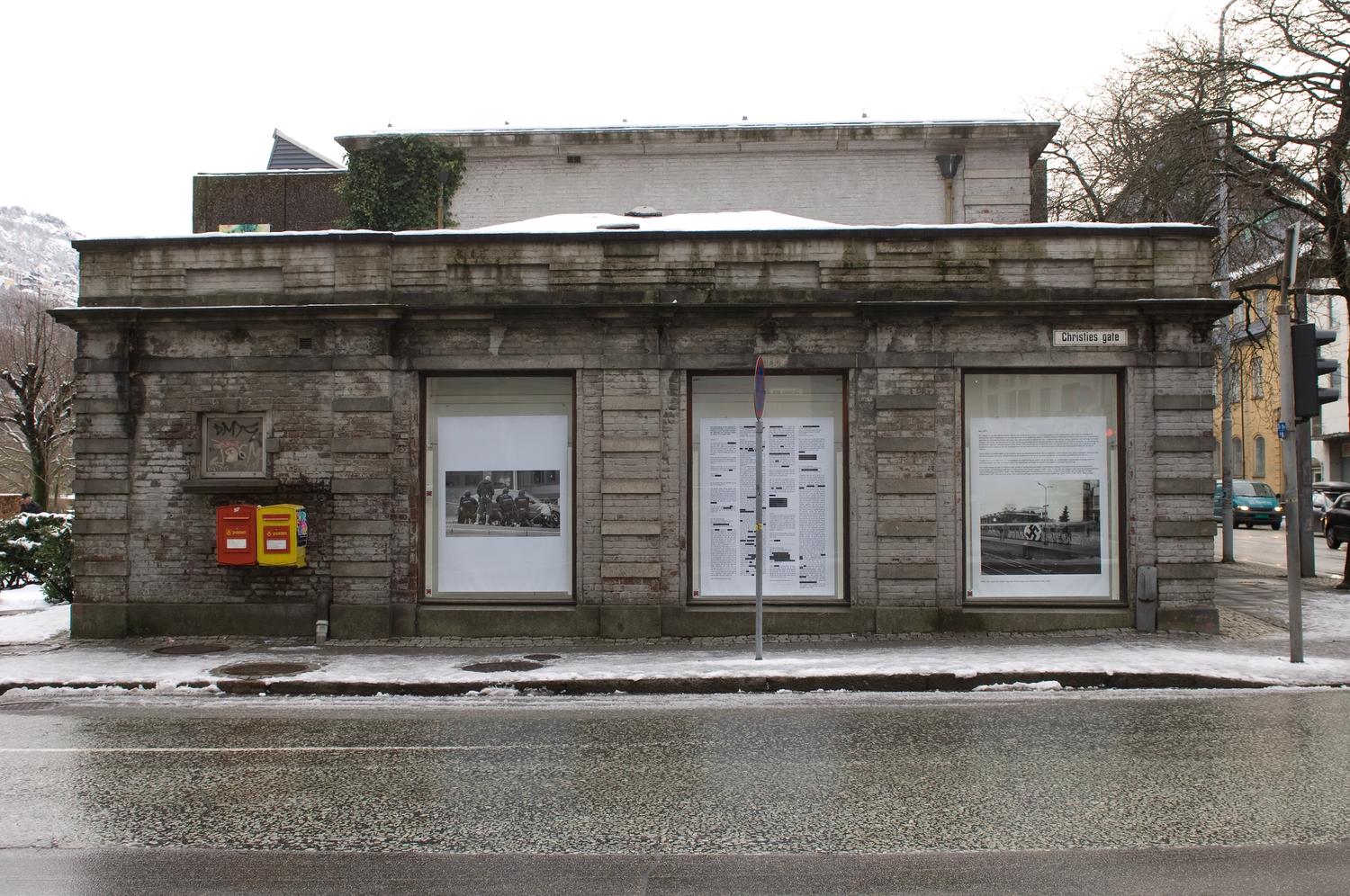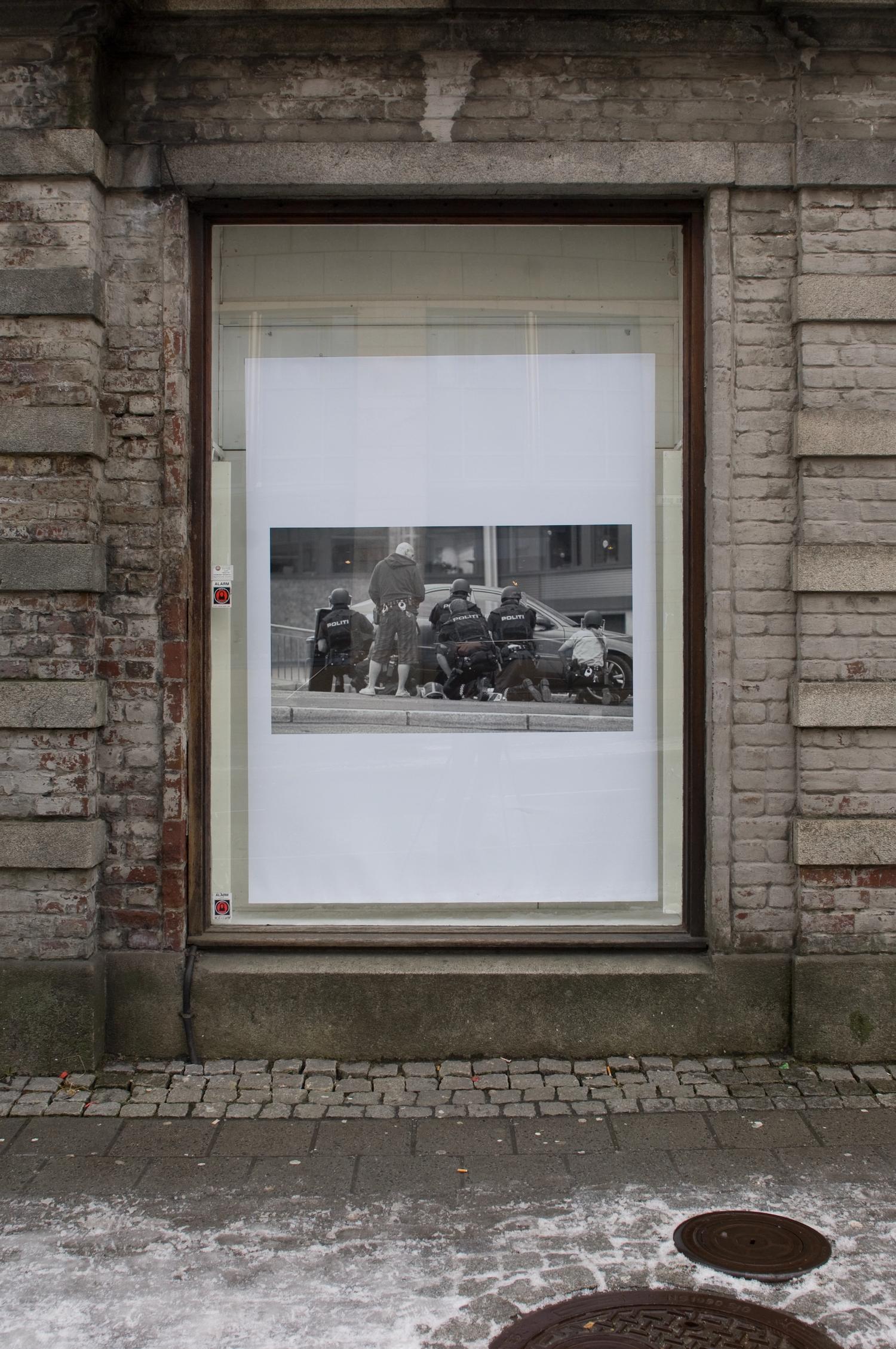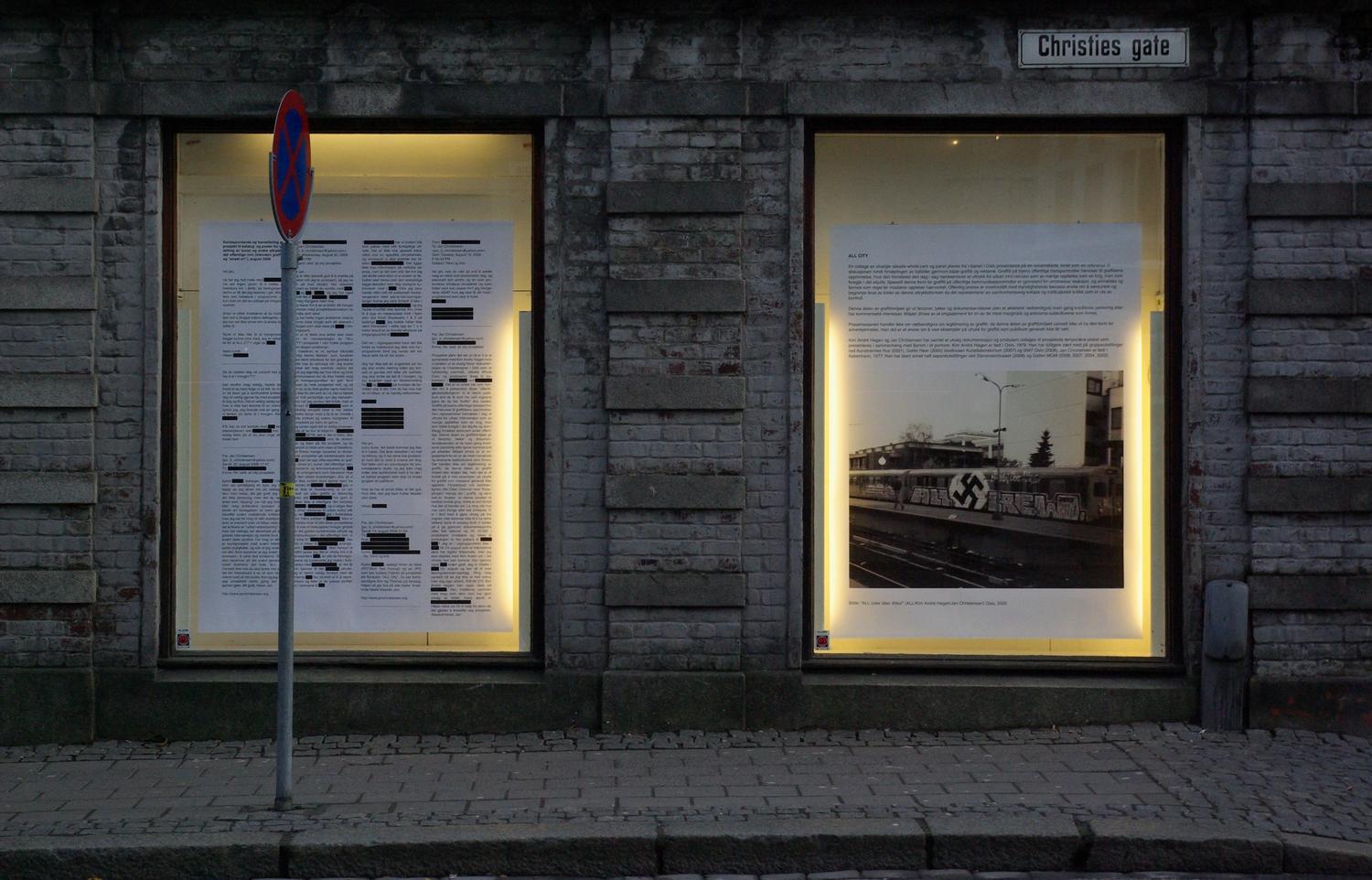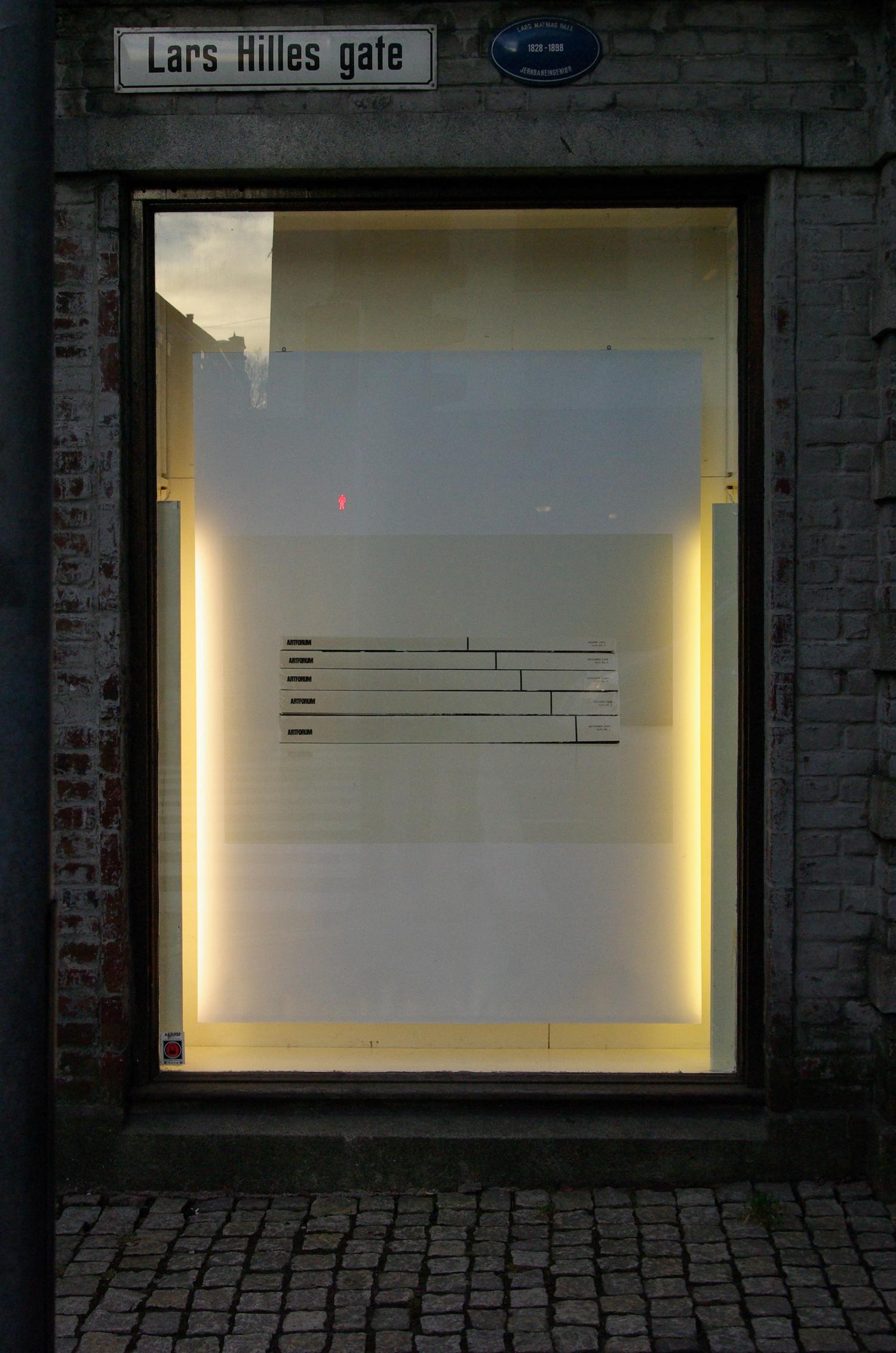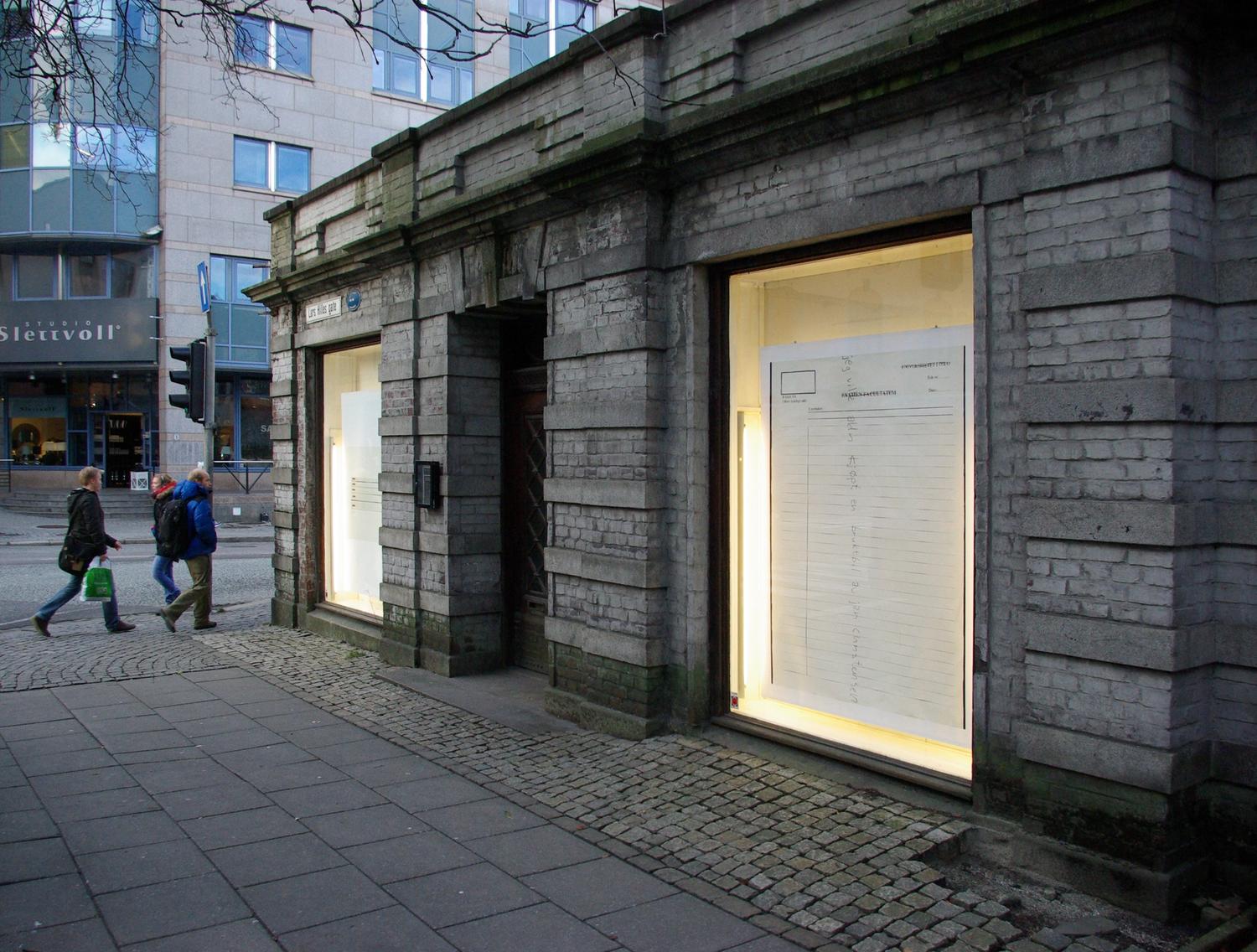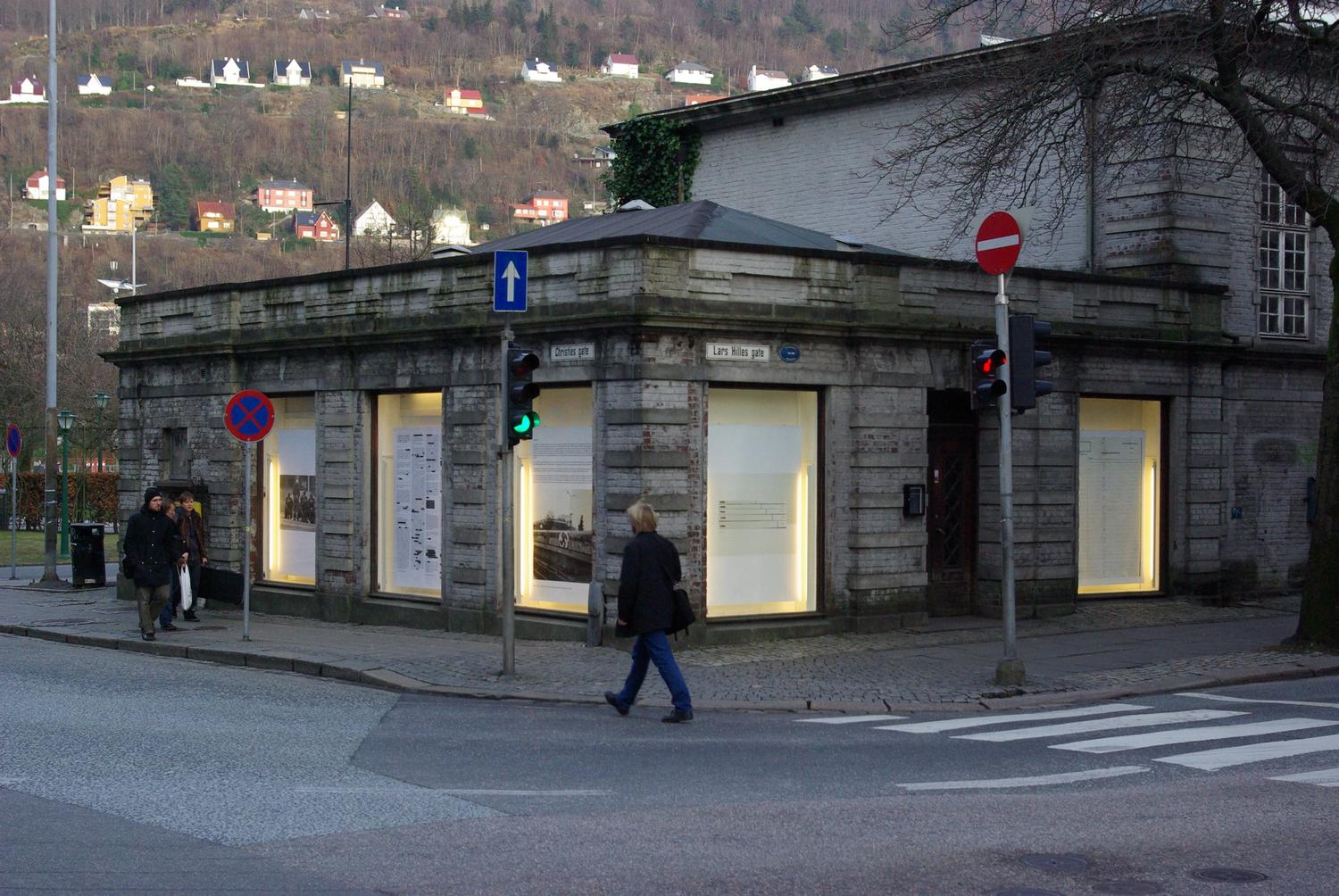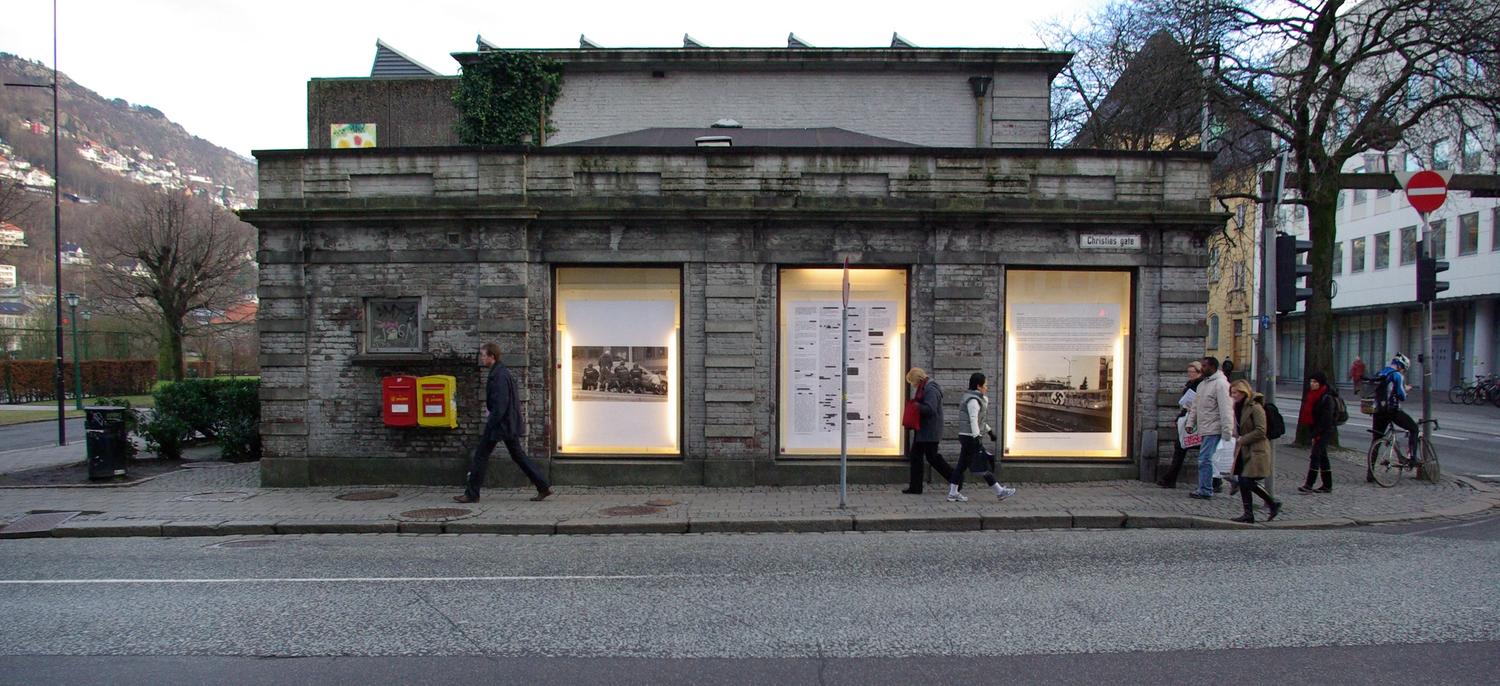Jan Christensen has created new prints for Volt’s five windows (200×150 cm). He adopts appropriation techniques as well as using original photography to create works that are difficult to categorize, but that consist of documentation of previously discarded collaborative projects.
Christensen’s practice often incorporates the collection and organisation of photographic material, texts and artistic references, which can be recycled with after a minimum amount of treatment before being reintroduced into a different context or displayed in an edited version of their original setting.
Found materials are directly recycled in the work “Sivil” (2009), which has been gleaned from the news media. Here, the image is immediately imbued with humour as it is liberated from its headline and accompanying text, despite the fact that its original context was one where the police attended what could have been a dramatic, violent incident. One may query whether the photographer and editor have displayed a certain amount of irony or dark humour in publishing this image – and whether this was appropriate in the context of news presenting – or whether it was merely an editorial oversight.
Christensen displays a similar approach to recycling material in the work “Examen facultatum (after Sveinn Fannar Johannsson’s ‘The best work I never made’ (2007)) from 2009, where he chose to appropriate Johannsson’s scanned note. As a young art student Johannsson sent this note to l Christensen after their first meeting in Leipzig in 2007. Johannsson’s brief text contains a double reference in the sense that he in the title both paraphrases
Christensen’s textual work “I Will Never Make It!” from 2000, and critiques the simple practice of appropriation by writing: “I would never buy a used car from Jan Christensen” (in Norwegian). This critique also functions as a cryptically coded portrait, and the circle is completed by Christensen’s challenging Johannsson’s assertion by appropriating the note and displaying it.
In the sparse photograph “Facts” we can make out five editions of the American magazine Artforum number 47, piled on top of each other with their spines facing the camera. The magazine has been one of the main vehicles of theoretical discourse on art for years, consistently setting the agenda for discussion around works of art and their mediation and interpretation. For those in doubt, this sombre image captures how vulnerable the art market is at the top of the capitalist food chain without such debates.
Together with Kim André Hagen in 2008, Jan Christensen worked on an outdoor urban culture event for self-initiated projects in the city, including graffiti. “Svastika” relates one aspect of this project: Hagen and Christensen’s desire to use documentation of a metro train carriage, which was thwarted and has to be cancelled. The documentation was intended to be used as an example of artists’ desire to problematize and highlight the debate around art in the public realm, and to define the value of graffiti in relation to other forms of expression. “Svastika” shows how the use of certain symbols – even if they are employed ironically – can be inflammatory, and circumscribe the artistic process. The project was never realized, but sections of correspondence and suggestions for publication submissions become works of art in themselves.

